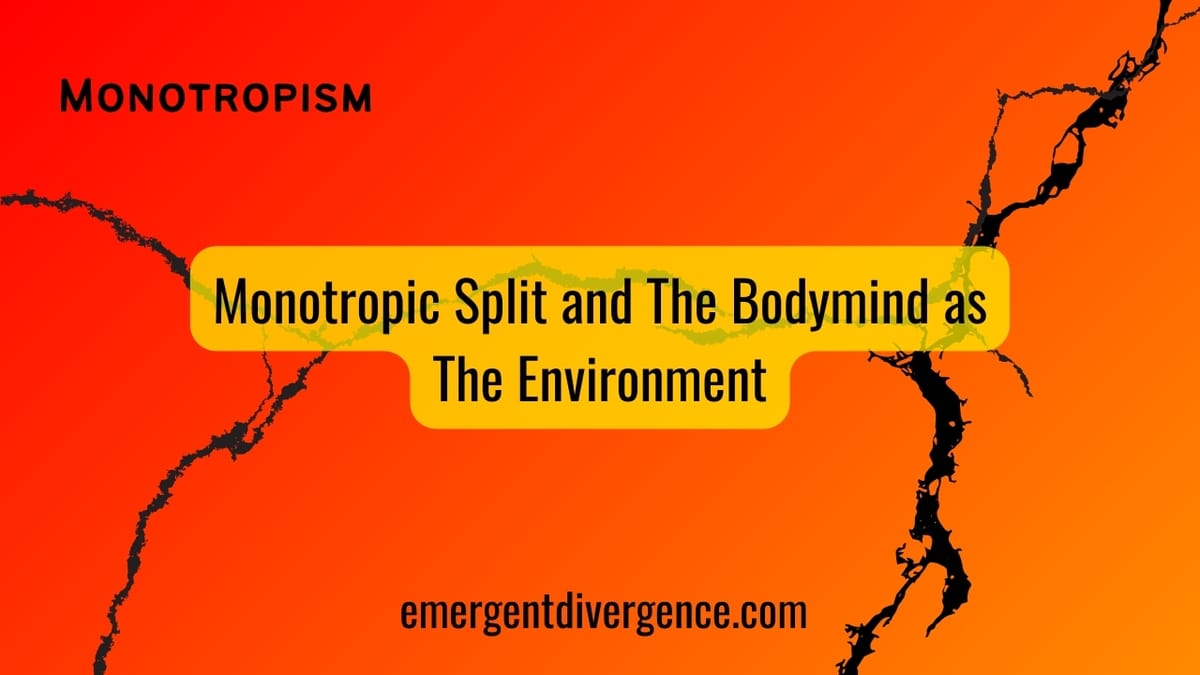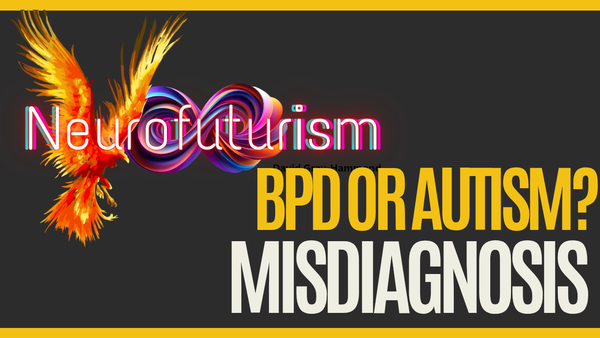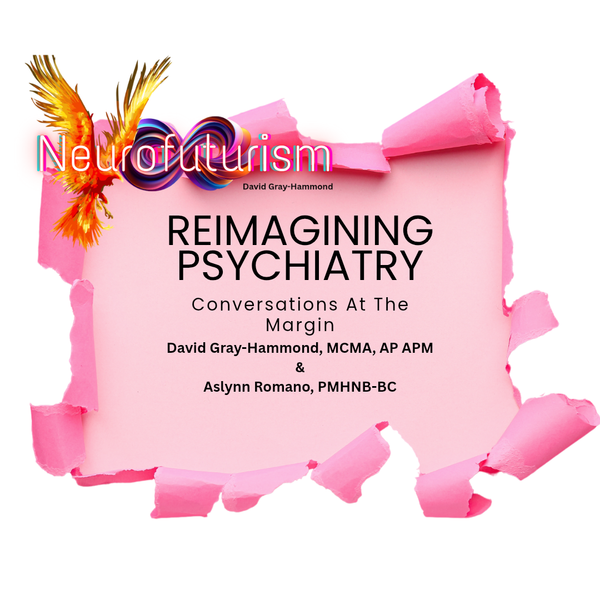Monotropism: Monotropic Split & The Bodymind Environment
In This article, David and Tanya explore the bodymind as an environmental contributor in it's own right and how that contributes to monotropic split. It highlights the relevance of managing pain and illness for the prevention of monotropic split and burnout.

We have written extensively about the importance of the environment in determining the outcomes of Autistic and otherwise neurodivergent people. We are staunch advocates of the Golden Equation as outlined by Dr. Luke Beardon (Autism + Environment = Outcome). We are all too familiar with how monotropism and experience of the environment are intertwined, and keen to expand on not only how monotropism relates to Autistic outcomes, but also what constitutes the environment.
What is Monotropic Split
Monotropic split (as outlined by Adkin, 2023) conceptualises a mechanism by which those with a monotropic attentional style experience the overburdening of their attentional resources, and the subsequent cognitive trauma and burnout that arises. Monotropic people's attentional resources are distributed deeply and via an interest-based mechanism. Despite any person having a finite amount of attentional resources, a monotropic bodymind can not regulate the amount of attention given to competing demands, resulting in the splitting of monotropic resources. Therefore, demands within the environment must be regulated in line with the golden equation to avoid monotropic split and it's associated negative outcomes.
What is The Golden Equation?
Autism + Environment = Outcome
This simple equation, as outlined by Dr. Luke Beardon is rooted in the principle that autism, while dynamic, is a fixed factor. An Autistic person is, and always will be, 100% Autistic. You can not make an Autistic person not Autistic. Their needs may change over time, and their experiences may shift, but this is due to the environmental changes and their experiences within it. Therefore, in addressing the outcomes that Autistic people experience, the changeable variable is only the environment. In simple terms, a poor environment produces poor outcomes.
The Body as the Environment
There are certain variables within our environment, that we have spoken about before, that can not be regulated. Examples of these variables include parenting responsibilities, professional and work life demands, and also health and bodily needs. The latter represents a level of complexity. We think of environments as being around us and somewhat separate from us. However, the body itself presents an environment that we reside within (that we can not regulate), and if that environment is toxic or harmful, it can create an unregulated demand on our monotropic bodyminds.
In this context, it is necessary to highlight the significant over-representation of monotropic bodyminds in chronic illness and chronic pain populations.
"[Autistic children] are about twice as likely as their typical peers to experience chronic or recurrent pain"
Bogdanova, 2022
It seems reasonable to assume this statistic would be the same or higher for Autistic adults, and therefore highlight that chronic and recurrent pain is a prevalent issue for the entire community. Chronic pain then becomes an environmental issue. The body is an environment, and chronic pain is an unregulated demand within that environment. Some monotropic people will try to remedy this environmental demand via self-medication or engagement with healthcare, while others may have a harder time accessing solutions. Chronic pain is creating a hostile environment within the body via an unconscious attention tunnel.
Unconscious Attention Tunnels
Give our finite attentional resources, some of those resources are demanded unconsciously. An example of this would be interoceptive experiences such as hunger or thirst. We may not be consciously aware of this demand (ever been hangry?), but it exists and pulls upon our attentional resources. Even if we can not consciously identify the feeling due to interoceptive differences, we still have an unconscious awareness of it. We may maintain an unconscious hypervigilance due to traumatic experiences (see meerkat mode). Emotionally we may be experiencing difficulties, while not always felt, they are ever-present. All maintaining constant use of our precious attentional resources.
Considerations for Monotropic Split and The Bodymind as an Environment
This highlights that there are many unconscious demands on our attentional resources, and in respect of our physical body, illness, pain, or emotional distress is creating such a demand within our bodymind environment. When considering what may be a toxic or hostile environment, failure to address the bodymind as an environment within it's own right is a failure to curate and regulate the environment in it's entirety. Therefore, managing monotropic split will not be possible without also managing other health and bodymind needs.


